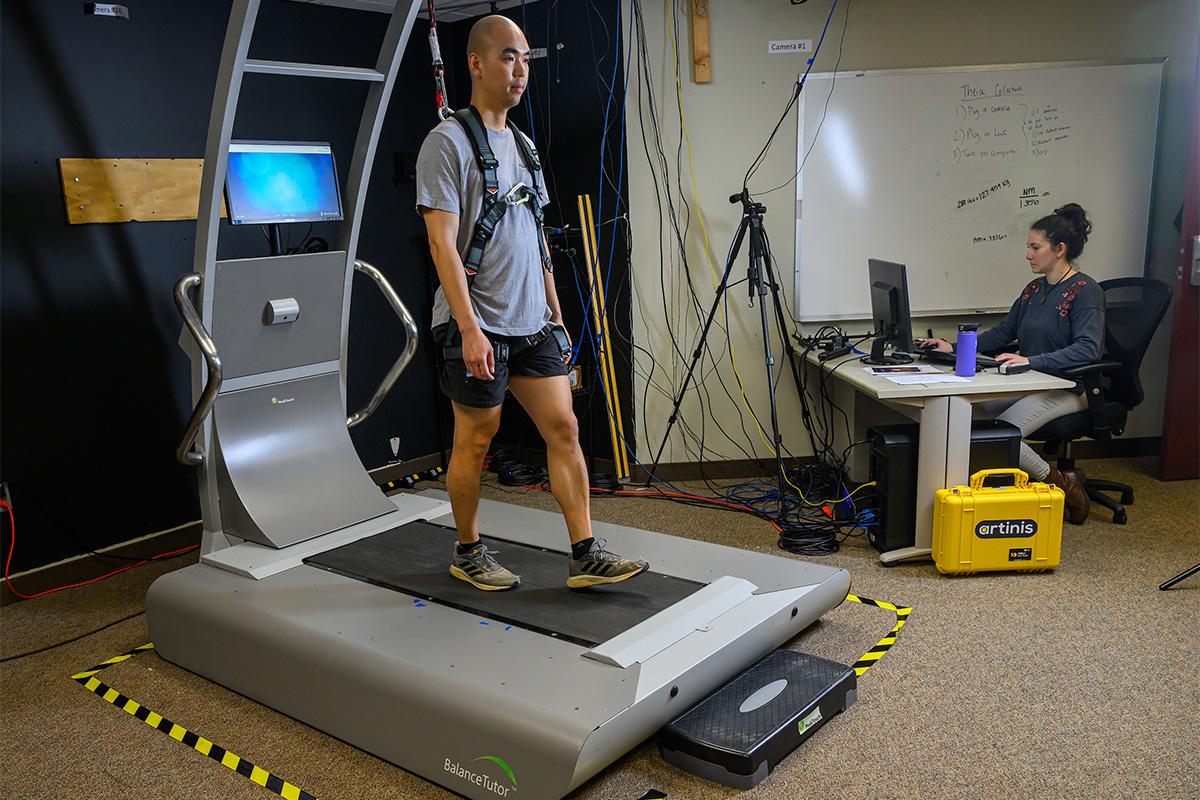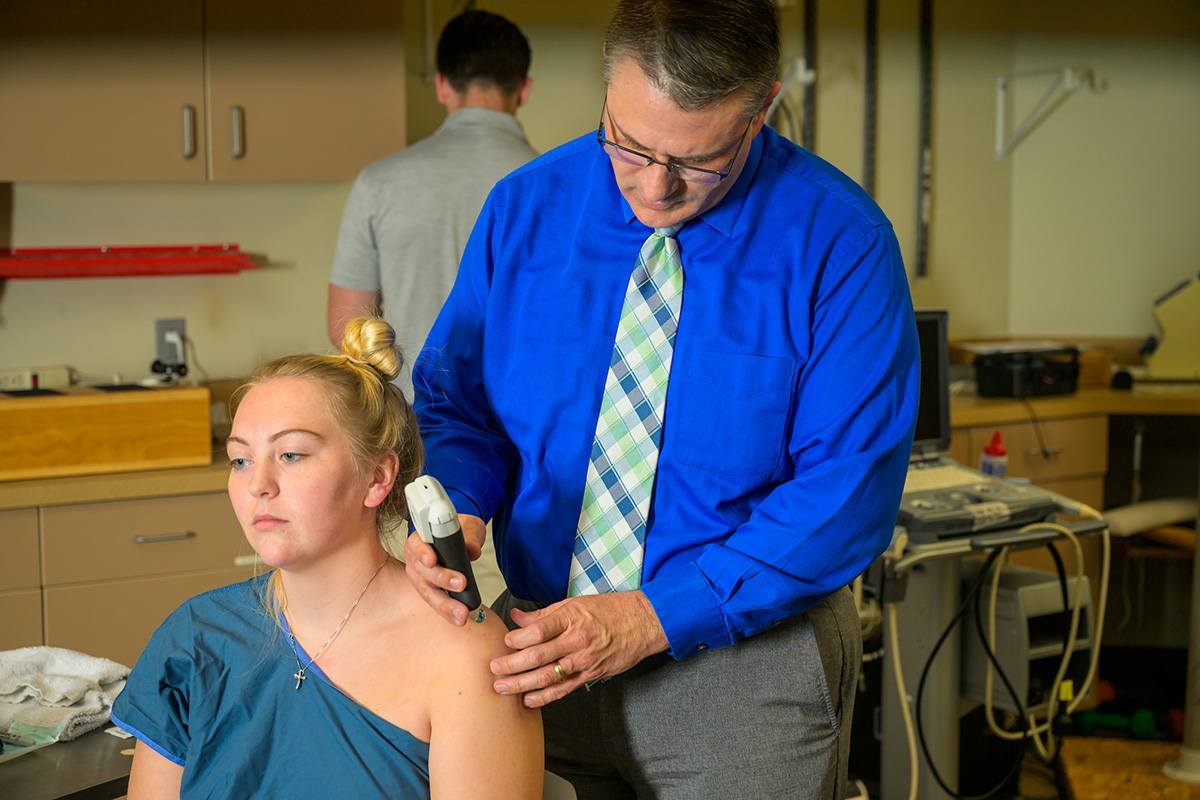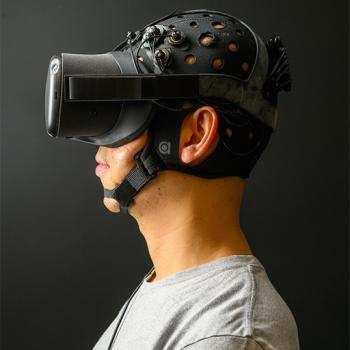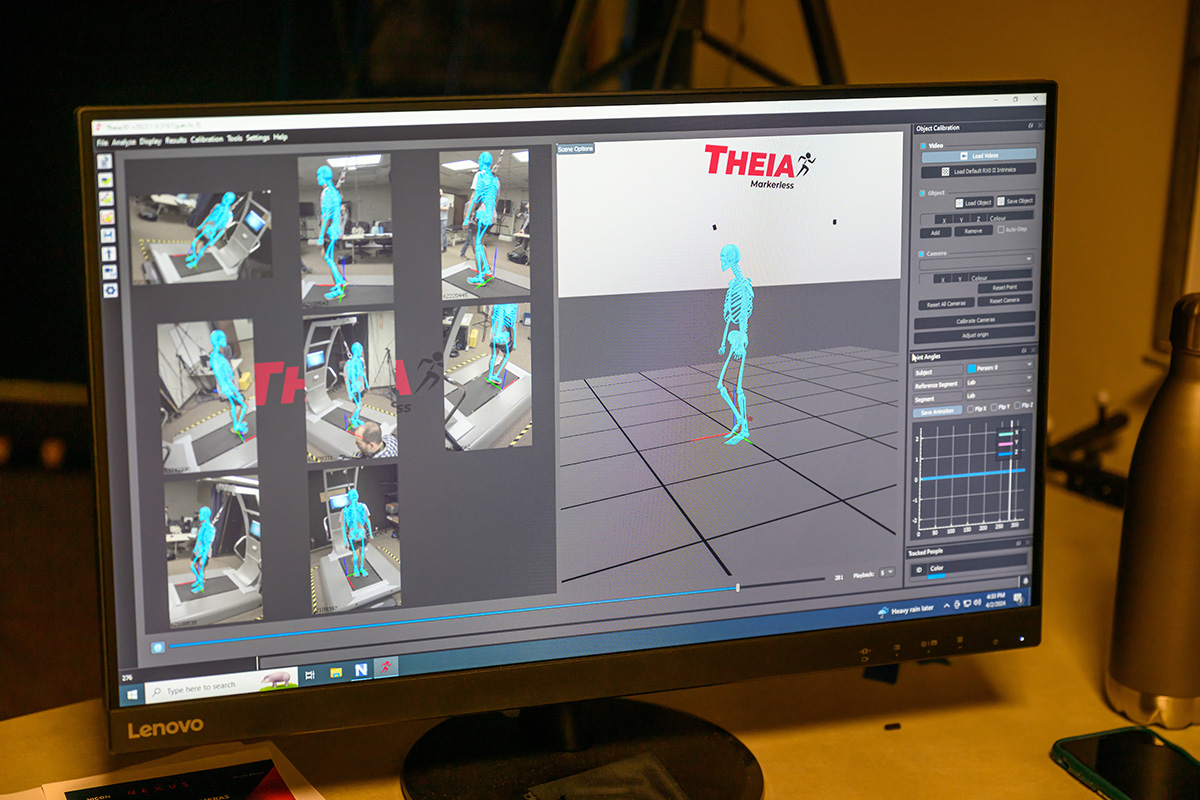The fNIRS uses infrared light sensors to detect deoxygenated blood to indirectly measure changes in brain activity through a cap that allows for more functional tasks compared to an fMRI brain scan. Changes in absorbed light allow measurement of hemoglobin concentration to estimate the blood flow to various areas in the brain that indicate brain activation.
Facility and Equipment
The Motor Control Lab is located in the Grover Center. With state-of-the-art equipment, the lab is designed to facilitate research, education, rehabilitation and athletic performance training.
Each piece of equipment in the lab offers unique insights about human motion and joint and muscle performance. Learn more about the equipment available in the lab and its potential uses.
Equipment Information
Balance System, Biodex
The Balance System is used to increase balance, agility and muscle tone for a variety of pathologies. Populations and applications such as fall risk individuals, senior rehab, wellness, neurorehabilitation, vestibular disorders, sports medication and concussions.
Balance Tutor Treadmill, MediTouch
The Balance Tutor Treadmill uses advanced technology that allows training reactive postural control response while standing or walking at different gait phases. The platform is customizable to create a postural perturbation in a medial/lateral and forward/backward direction.
Cybex Humac Norm, CSMi
The Cybex Humac Norm is an isokinetic machine that is primarily used in research, education, athletic performance training and rehabilitation as a way to measure and improve joint and muscle performance.
Diagnostic Ultrasound, GE LOGIQ
The Diagnostic Ultrasound is an imaging test that uses sound waves to create a real-time view of internal structures and tissues. It is utilized in research, education, pain management, dry needling and monitoring progress throughout rehabilitation.
Handheld Ultrasound, Clarius
A portable version of the diagnostic ultrasound machine that uses Bluetooth to connect to a tablet.
Electromyography (EMG), Delsys and Noraxon
The Delsys 16-channel and Noraxon 8-channel systems use invasive or non-invasive electrodes to measure the muscle’s response and electrical activity via stimulation of the nerve innervating the muscle. They're used for biomechanical research, rehabilitation and athletic performance as way of evaluating muscle function and coordination between the brain and MSK system.
Handheld Dynamometer, Lafayette Instrument
The Handheld Dynamometer is used to objectively quantify muscle strength, and applicable to tracking progress during rehabilitation or strength program.
Inertial Measurement Units (IMU), Noraxon
The IMU is used to measure anatomical joint angles, linear acceleration and orientation angles.
Myofilament Probe, Myoton
The Myofilament Probe offers a non-invasive method for measuring superficial muscles, tendons, ligaments and adipose tissue. The hand-held device measures tone, stiffness, elasticity, relaxation and creep of tissues that is primarily used for research purposes.
Theia, Theia Technologies
An 8-camera system allows for researchers to study movement in the real world without the lengthy calibration and marker set protocols as marker-based systems. Deep AI learning algorithms are applied to the videos on a frame-by-frame basis to overlay a scaled skeleton model and calculate numerous kinematic signals.
-
Interested in Joining the Lab?
We are always seeking highly talented and motivated scientists to join our team. For doctoral and post-doctoral trainees, we look for a demonstrated track record of success and prior formal training in sports medicine, neuroscience, biomedical engineering, biomechanics or similarly related fields. Contact Dr. Neil Evans to learn more.



